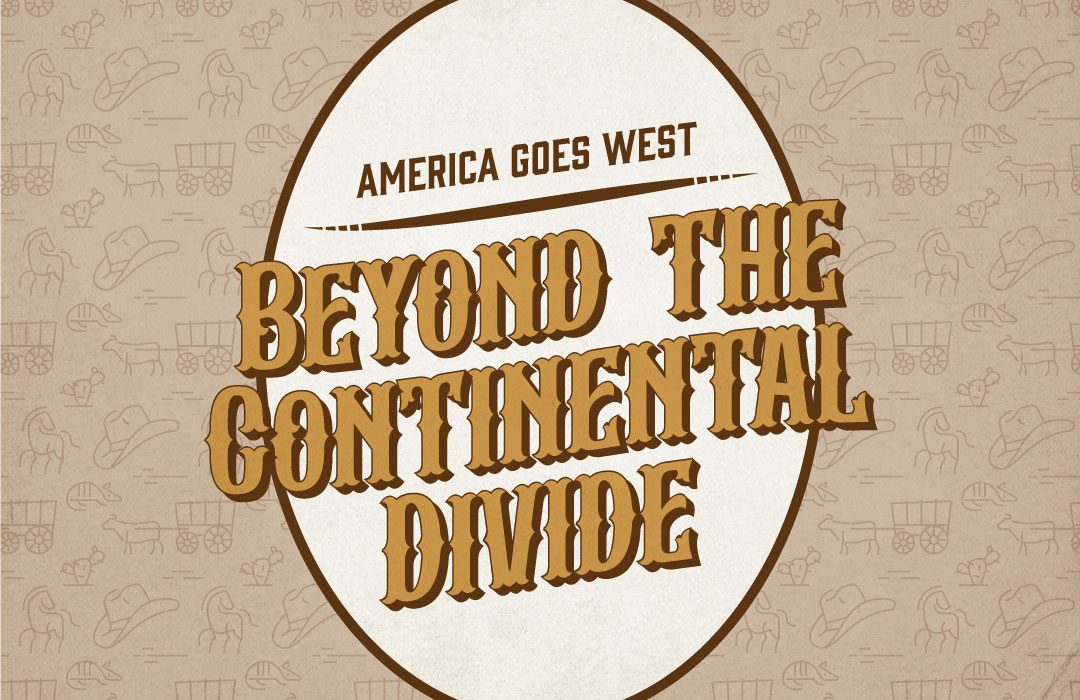
In the 1800s, Americans were eager to venture westward toward new lands and territories. While Lewis and Clark made their way west from 1804 to 1806, merchants, missionaries, traders, and trappers were among the first European people to trod a path across the Continental Divide. Others sailed around Cape Horn and across the Pacific Ocean as they trekked westward. Put on your learning cap and get ready to learn about the diverse and complicated histories, families, and events that are rooted in the West.
In this guide, we’ll cover:
- McAllister House Museum – Colorado Springs, Colorado
- Hotel de Paris Museum – Georgetown, Colorado
- Hoover-Minthorn House Museum – Newberg, Oregon
- Hawaiian Mission House – Honolulu, Hawaii
McAllister House Museum
Colorado Springs, Colorado

We’ll begin our trip across and beyond the Continental Divide in Colorado. Entering statehood in 1876, Colorado was home to gorgeous mountain ranges, trappers and traders, and wildlife. In 1862, the Homestead Act was passed, and settlers from the east began traveling to Colorado to claim land. Besides the breathtaking landscapes, clean air, and variety of recreational activities the state offers, Colorado has many historic sites that tell the stories of early settlers and developments, like the McAllister House Museum.
On your tour, you’ll learn that the house was home to the McAllister family, who had a significant impact on the development of Colorado Springs. The McAllister House was the very first home to be built in the Falcon Colony, the area’s name prior to becoming Colorado Springs. Major Henry McAllister spearheaded the planning of Colorado Springs. He moved his family to the home in 1873, where he organized, campaigned, and promoted the city to prospective buyers.
Built with bricks to combat winds strong enough to blow a train off its tracks, the McAllister House Museum has many of its original features like its three magnificent marble fireplaces, historic furnishings, and several artifacts. The site of the house location was selected due to the direct line of sight to Pikes Peak, granting its occupants’ gorgeous views of the summit.
Visit the McAllister House Museum to hear the stories that bring the home to life. Learn more about the house and the family that resided there, and discover the stories of Major Henry McAllister and his part in the town’s founding.
Other McAllister House Museum Attractions:
Tours on Thursday – Saturday: 10:30, 12:30, and 2:30. Reserve your tour time.
- $7/Adults, $6/Seniors (62+), $3/Children (6-12)
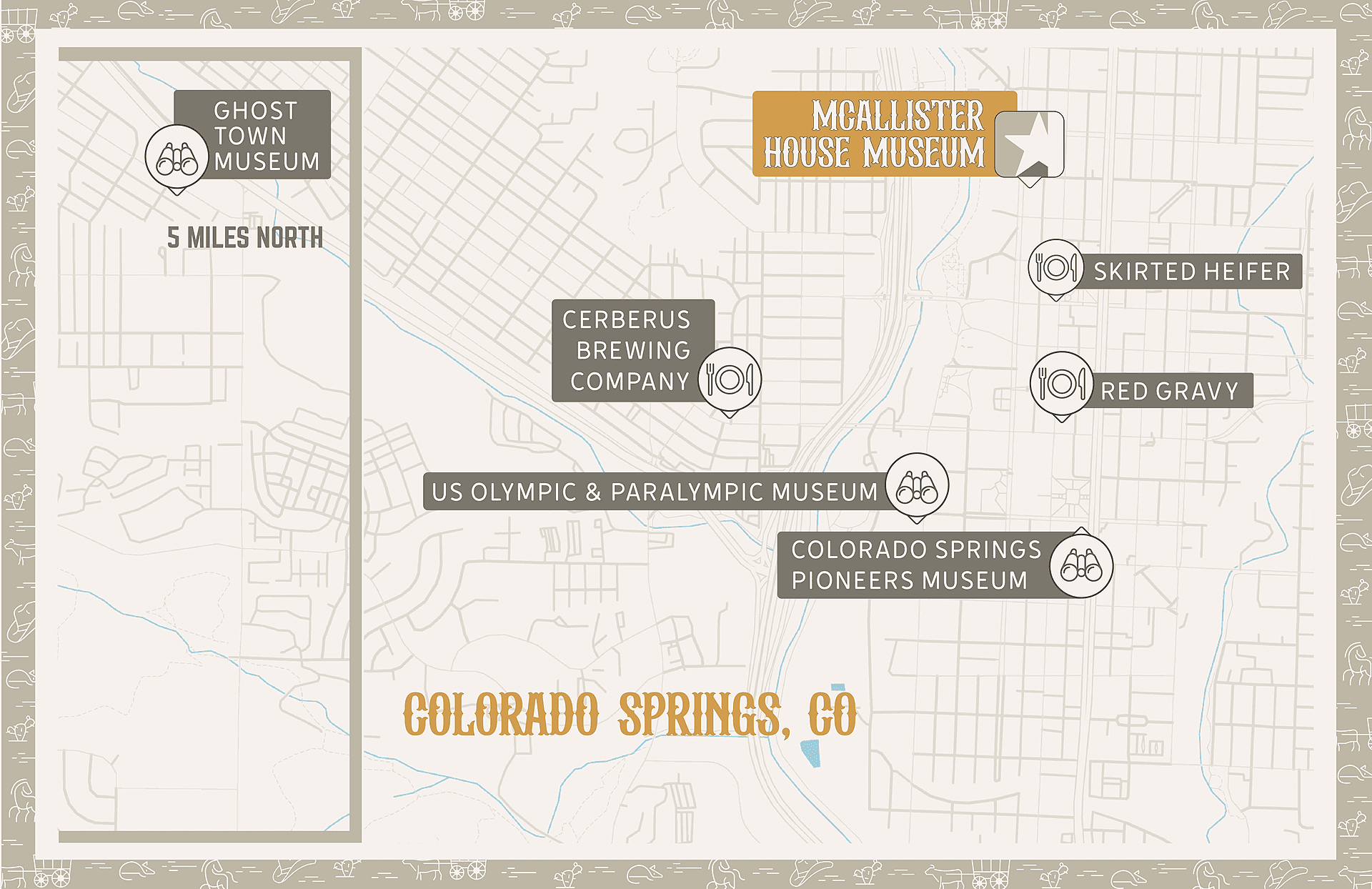
Things to Do Nearby:
Places to Eat:
Hotel de Paris Museum
Georgetown, Colorado

Continuing our road trip beyond the Continental Divide in Colorado, make sure to travel through Georgetown. Originally a mining outpost, Georgetown was established in 1859 when gold was discovered in a nearby creek. While traveling into the town, you may spot a very large, man-made lake from I-70! The town has magnificent views and sites that grant visitors a beautiful getaway. Georgetown was known as the last major stop for most folks before crossing over the Continental Divide. While you’re there, visit the Hotel de Paris Museum.
The former inn was established by Frenchman Louis Dupuy, the best-known cook in the Colorado Territory. He was often referred to as the Mysterious Frenchman, the Hotel Prince, French Louie, the Oddest Host in America, and the Father of Domestic Science in America. A truly fascinating person, visitors can learn more about Louis Dupuy, his history, and his achievements. If you are looking for inspiration, Dupuy’s life is one of the better examples of second chances.
Hotel de Paris contained showrooms for traveling salesmen and catered to wealthy businessmen, railroad tycoons, mining investors, hunters, fishermen, and those who sought high-class accommodations in the area known a the “High Country.” Those who stayed at the hotel marveled at the elegant quarters, gas and electric lights, steam heat, hot and cold running water, and the wine cellar stocked with spirits from around the world.
As his town-given title suggests, Dupuy’s first-class French restaurant offered its guests three meals a day, including oysters, wild game, hand-cut steaks, and seasonal delicacies. The Hotel de Paris Museum and its restaurant are often used in films because of its beautiful interior and accurate room restorations.
Since 1954, the Hotel de Paris Museum has undergone millions of dollars in renovations and preservations. As a result, visitors can admire the period rooms furnished with objects original to the site, the black walnut and silver maple flooring, English carpets and tiles, velvet-covered couches, marble vanities, and the impressive collection of printed materials from Dupuy’s personal library. Nestled in the charming Town of Georgetown, make sure to stop by this restored gem during your road trip westward!
Other Hotel de Paris Museum Attractions:
- Guided Tours on Tuesday-Sunday: 10 AM – 4 PM – $10 Admission; Discounts available.
- Wine Experiences – $50 per person; Reservations required
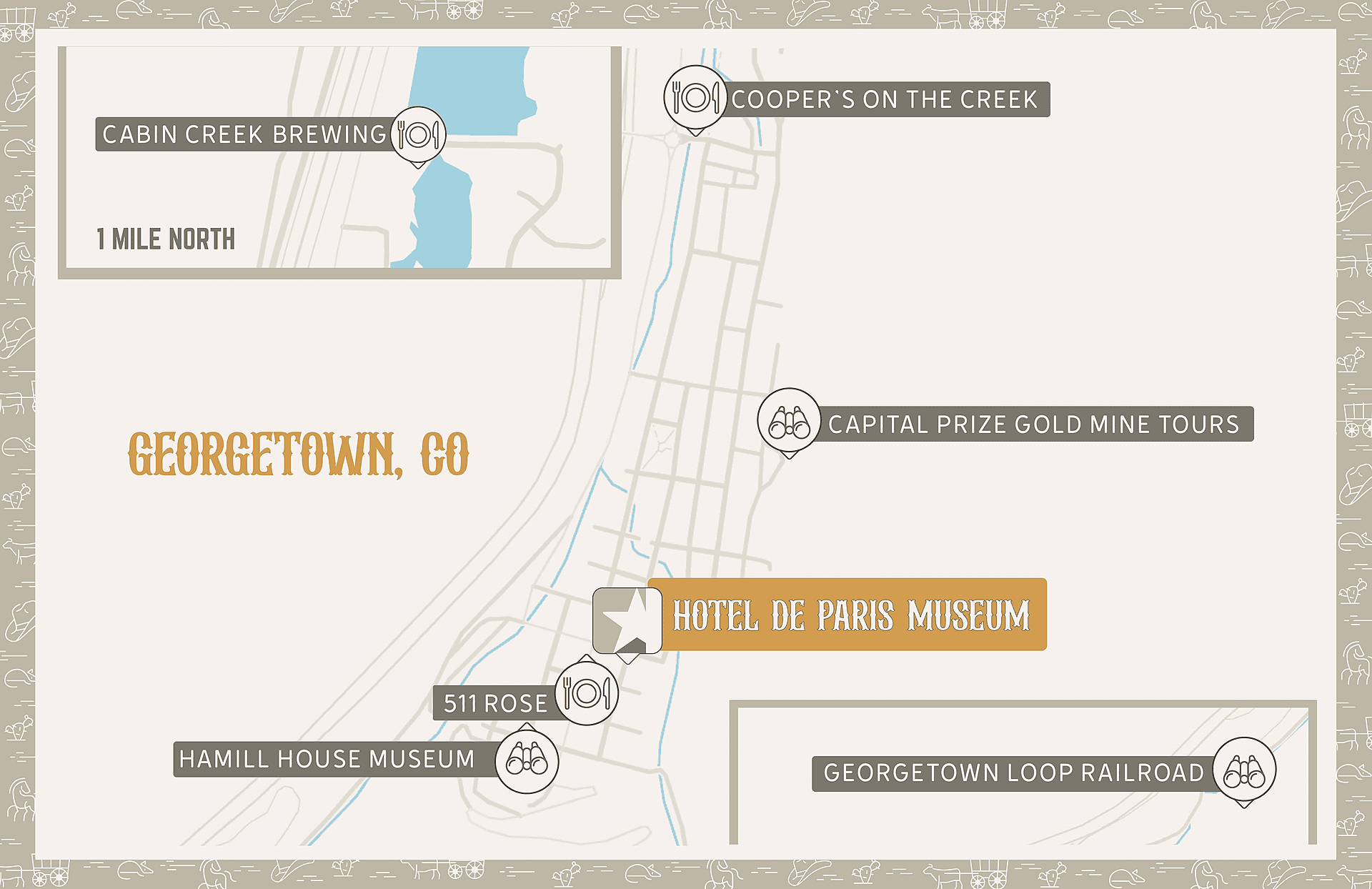
Things to Do Nearby:
Places to Eat:
Hoover-Minthorn House Museum
Newberg, Oregon

As you make your way beyond the Continental Divide, direct your road trip through Oregon. You’re likely familiar with the Oregon Trail, the approximately 2,000-mile-long route used by hundreds of thousands of American pioneers to migrate westward throughout the mid-1800s. Oregon was declared a state in 1859, and thanks to the Oregon Trail and the gold rush, many Americans made Oregon their home. In 1885, a young boy by the name of Herbert Hoover came to the Oregon town of Newberg to live with his aunt and uncle, the Minthorns. Mosey on into Newberg, Oregon, to visit the first residence ever built in the town, now know as the Hoover-Minthorn House Museum.
While you’re visiting, you’ll learn the story of Herbert Hoover’s childhood home and how he became one of the world’s greatest humanitarians, a visionary who wanted world peace, and the 31st President of the United States. In addition, you’ll also learn about his uncle Dr. Minthorn, a country doctor who cared for the local community.
The furniture featured in the home is the original set the President used as a boy. Other period furnishings found throughout the house belonged to other Newberg residents and homes. In 1955, Hoover even came to the house to dedicate it as a museum on his 81st birthday! So, if you’re a fan of Presidential sites with stories, stop by the Hoover-Minton House Museum to hear how this small town molded President into a world Leader.
Other Hoover-Minton House Museum Attractions:
Open hours vary by month.
Admission: $5/Adults, $3/Students & Seniors, Children 10 and under are free.
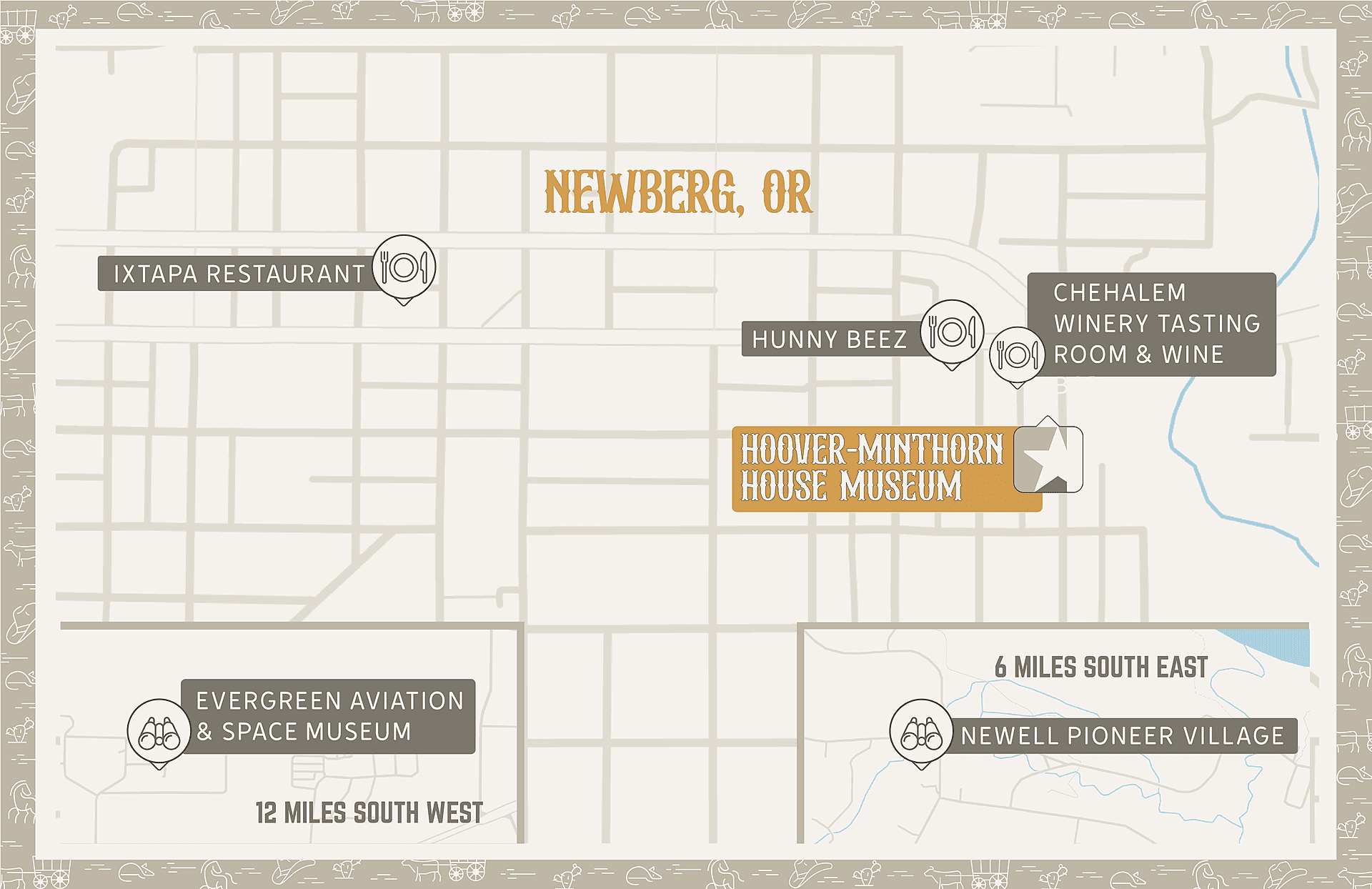
Things to Do Nearby:
Places to Eat:
Hawaiian Mission Houses Historic Site
Honolulu, Hawaii

As our road trip out West comes to a close, we arrive at our final destination: Hawai’i! (You may need a plane or a boat for this one.) It may be the final destination, however, it was the first of our sites to be established. In 1820, New England Protestant missionaries arrived in Hawai’i just as monumental change was sweeping the islands following four decades of foreign contact after the arrival of Captain Cook in 1778. As you make your way through Honolulu, stop by the Hawai’ian Mission Houses to learn more about how the missionaries and Native Hawaiians interacted with each other through the changes in Hawaiian society between 1820 and 1863.
In particular, the New England missionaries partnered with the ali’i (chiefs) introducing Christianity, creating the written Hawaiian language, a constitutional governement, choral music blending Hawaiian expression, and western medicine. The Hawai’ian Mission Houses’ continues to help contextualize and understand the role of Protestant missionaries in Hawaiian history through its archival and object collections, preservation of the historic houses, and public programming.
At the end of the 19th century, American and Hawai’i-born businessmen would illegally overthrow the constitional monarchy, replace it with a republic, and work towards annexing Hawai’i to the United States. The Hawai’ian islands were unilaterally annexed by the United States in 1898, over the objections of the Native Hawai’ians and became a U.S. Territory in 1900. Hawai’i would eventually become a state in 1959.
There are four historic houses you can visit while you’re there.
- The Chamberlain House, which was used as a storage area, office space, and a home for Levi and Maria Chamberlain and their family;
- The 1821 Frame Mission House, the oldest still-standing Western-style house in Hawai’i, which was used as a multi-family home be several significant families such as the Binghams, the Judds, and the Cookes;
- The Printing House, originally built as additional housing for the mission families, which features a replica printing press and tells the story of developing the written Hawai’ian language, the meteoric rise of Hawai’ian literacy, and translating the Bible; and,
- The Hale Pili o nã Mikanele, a Hawai’ian-style liligrass house, which is the reconstructed home of Reverend William and Clarissa Richards after their 1823 arrival in the islands and is representative of the dominant style of architecture in the early- to mid-19th century.
This remarkable, accredited historic site has been carefully and meticulously restored and cared for. The historic site holds many original belongings of the families that once lived there, along with related artifacts and period furnishings. Hawai’ian Mission Houses frequently hosts theatrical performances, Family Days, and is a destination for researchers seeking access to rich Hawaiian archives documenting the 19th century. The gift shop is home to locally made artisan products and historical books. Visit the Hawai’ian Mission Houses to learn about the interactions between the Native Hawaiians and missionaries, to learn why this site is nationally and architecturally significant, and explore the history of Hawai’i in the 19th century.
Other Hawaiian Mission House Attractions:
Guided Tours offered Tuesday – Friday, 11 AM -and 1 PM, Saturdays 11 AM, 1 PM, 3 PM
$20/Adults, $15/Seniors, Military, Kama’aina, $10/Students (6-18)
- Special Perspectives Tours – $25 (book in advance)
- Tuesdays at 3 PM – Architectural Perspectives Tour
- Wednesdays at 3 PM – Hawaiian Perspectives Tour
- Fridays at 3 PM – “History Buff” Tour
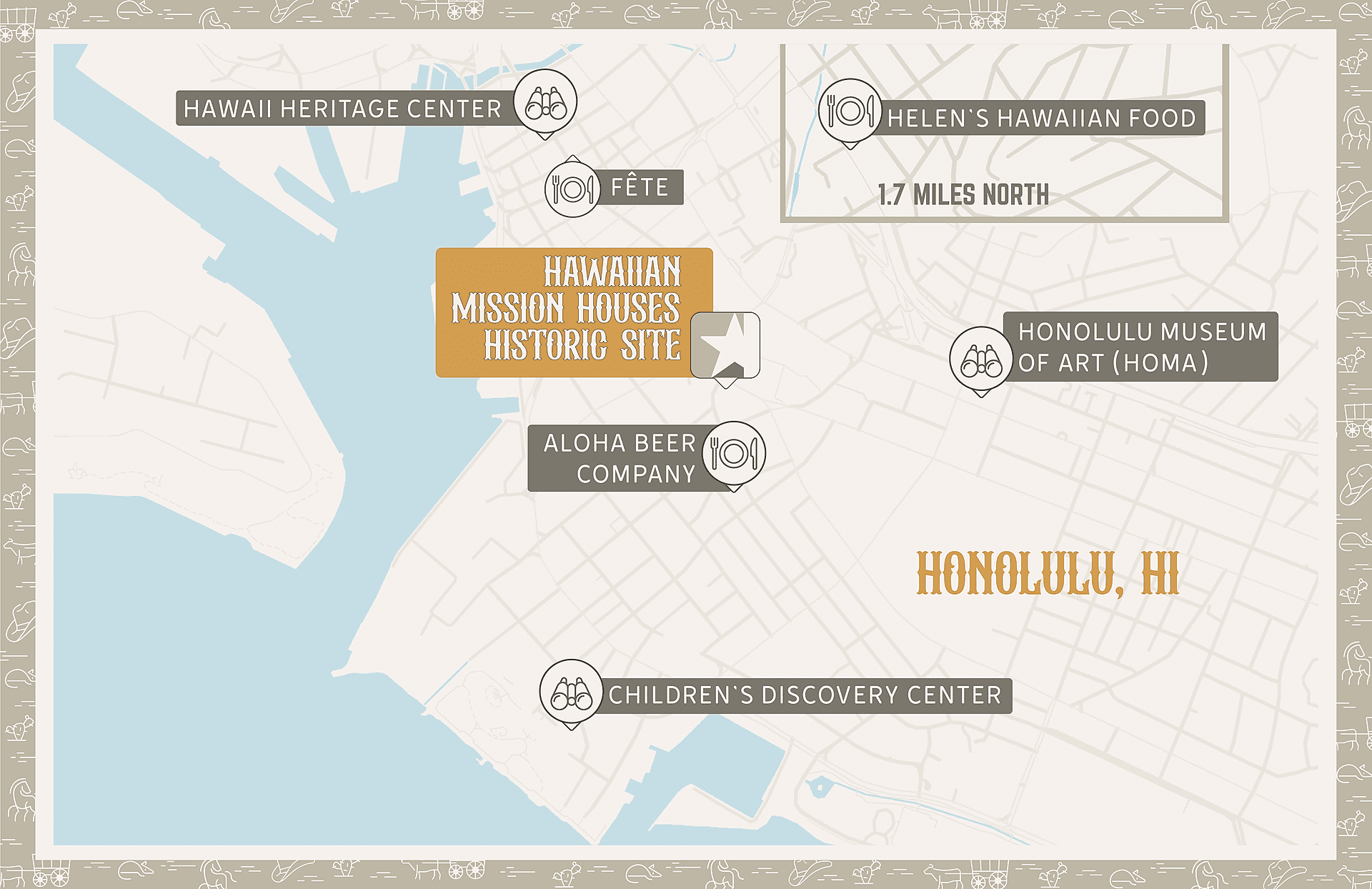
Things to Do Nearby:
Places to Eat:
Continuing Journeying Beyond the Continental Divide
Beyond the Continental Divide, we visit sites that tell the story of windy towns that can push a train off its tracks, French-inspired hotels, a U.S. President’s childhood home, and more!
In case you’re beginning your journey on the other side of the Continental Divide, make your way towards the Best States This Side of the Mississippi! Here you’ll find more sites that tell you stories of the American Indians, more French culture, and even a potential haunt. Giddyap!